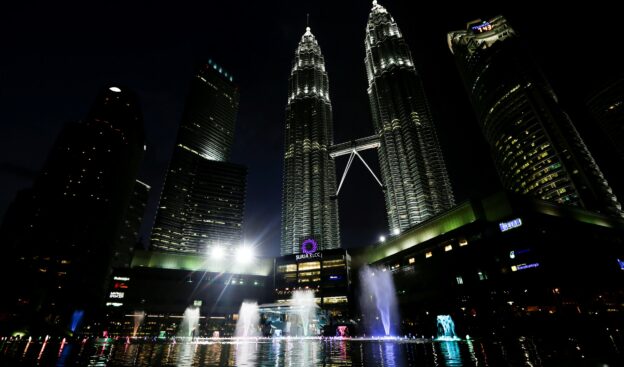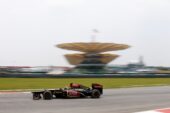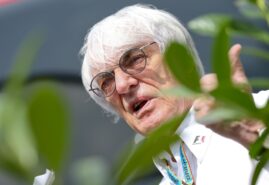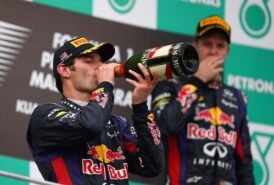Sepang- Prepare for a Storm

The Malaysian Grand Prix has become one of the most popular races on the calendar since its debut in 1999. The venue was the catalyst for a surge of Asian races that now dominates the F1 season, but it remains the most popular, alongside the historic Japanese Grand Prix.
Held just outside the country’s capital, Kuala Lumpur, its long straight and technical fast corners make it an attractive circuit and one that provides plenty of overtaking opportunities.
The race is traditionally held at the beginning of the season and it always provides plenty of drama and excitement.
This is largely due to the spectacular weather conditions. March is storm season in south-east Asia and heavy rain is frequent on race day.
This can cause excitement but it is also a massive hindrance. The rain is often too heavy for the cars to manage and the race has been stopped before. In 2009, the race was abandoned half-way through due to the freakish conditions.
However, when the rain stays away the sun beats down and it is one of the hottest events of the year. Drivers have been known to lose up to a stone in weight during the race, due to the extreme heat.
The changing of conditions is more frequent now, due to the change in start time on race day, which has become 4pm locally to make it more convenient for European viewers.
Ferrari has been the most successful team at the Sepang circuit as they dominated the first few years.
However, the most memorable race was in 2013 when Red Bull hit the headlines for the wrong reasons. Now referred to as ‘Multi-21-gate’, Sebastian Vettel overtook his team-mate Mark Webber to win the race in the final stages of the race.
This was seen as a dirty trick, as Webber had been assured that Vettel wouldn’t attack him and the cars would finish 2-1, in reference to the numbers on the front of their cars with Webber winning.
Malaysia still remains popular with both drivers and fans, as it is a blend of old and new F1. Modern, challenging and popular tracks are hard to come by but Malaysia has got the balance right.
In the fast changing world of the sport, Malaysia is growing in popularity and is now seen as an essential fixture of F1’s calendar.
Three Corners in Detail
Turns 1 & 2
Turn 1 is a big engine braking zone, coming directly after the pit straight where the engine has been at full throttle for a touch under 11secs. The driver will brake down from 7th to 2nd gear and just 80km/h for the entry of the turn before lightly applying the throttle between T1 and 2. At this point the engine needs to have good torque response as the revs drop to 9,000rpm. Engine engineers will do this through the pedal maps, giving enough sensitivity when the pedal is low.
Turns 5 & 6
Turns 5 and 6 are two of the fastest corners on the track, taken at an average 225km/h, with only a small lift off between corners. The high speed changes of direction put the internals of the engine under a lot of pressure, particularly the oil system, where the fluids are 'squashed' to one side by the g-forces. In contrast to T1 and 2 where the pedal sensitivity is required is at low opening positions, the driver will mainly be modulating the pedal towards its maximum travels. The driver needs to have confidence in the torque and pedal maps at these high pedal positions, particularly over the kerbs, to maximize his speeds through these two fast corners.
Pit straight
Top speed will peak at the end of the straight at around 310km/h with DRS activated. Getting the right balance between a high top speed and appropriate acceleration is critical, making the choice of gear ratios crucial: you want to hit top speed just before the end of the straight to take advantage of greater acceleration. How the car behaves at this cruise speed will also be important for the driver. It needs to be smooth, so as not to affect the longitudinal acceleration of the vehicle. A smooth engine behaviour at the end of straight will ensure that reaching the top speed will be as transparent as possible for the driver and make overtaking easier. However, this can sometimes be difficult to calibrate, especially at Sepang where you have two long straights of opposite directions, which can mean that the wind can come into play.
✅ Check out more posts with related topics:

















LAST 3 F1 Fan COMMENTS